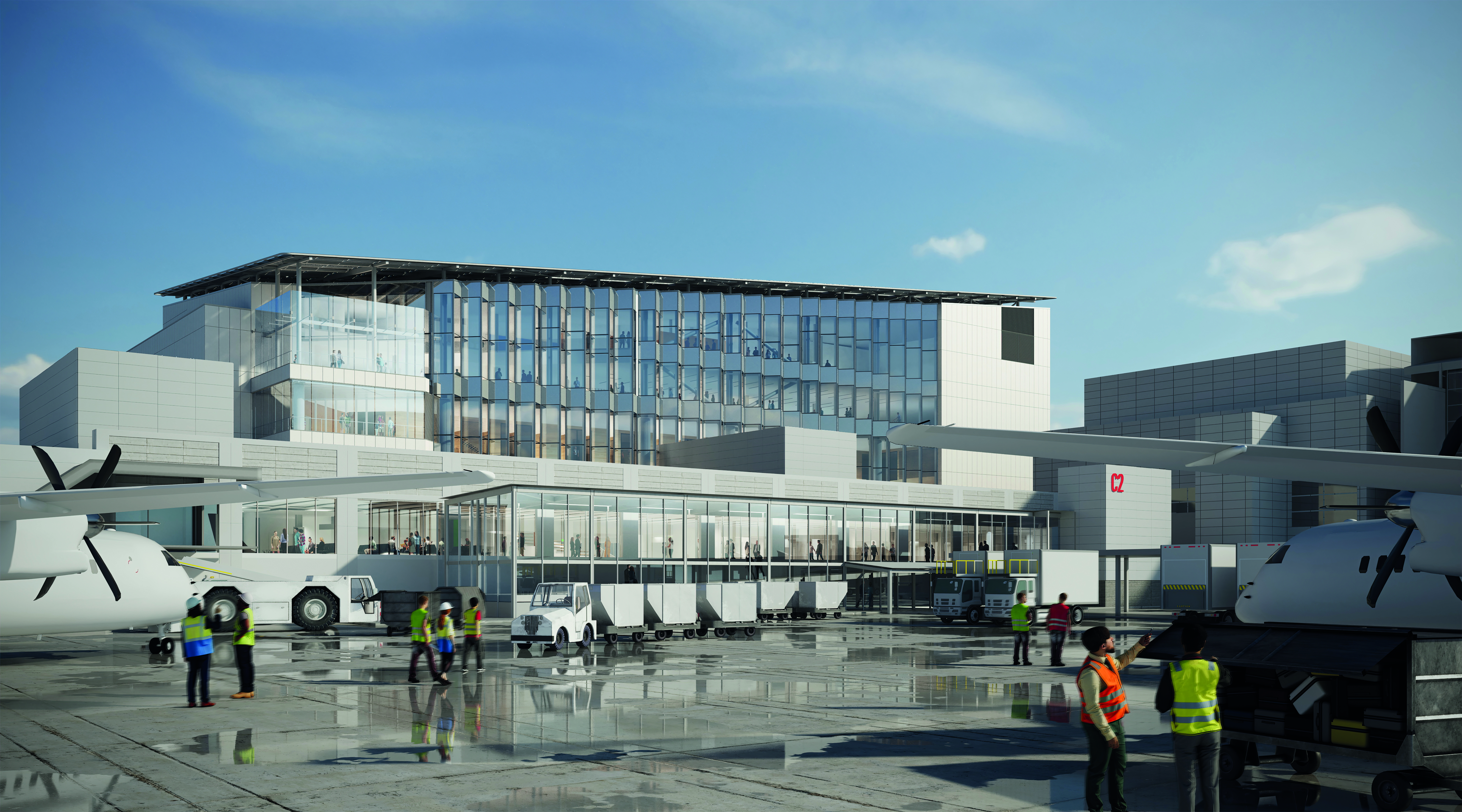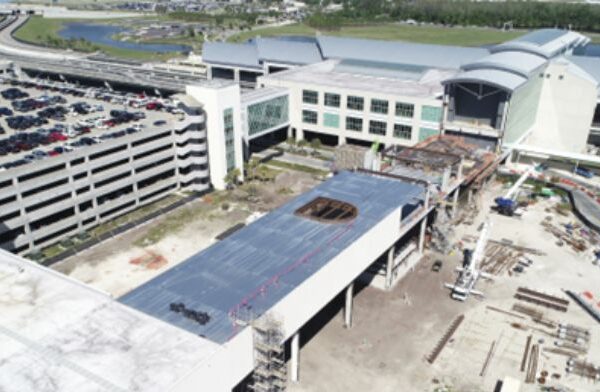From his childhood in Jamaica and his background in IT to working in the aviation sector and leading Seattle-Tacoma Airport, Lance Lyttle tells Chloë Greenbank why he wouldn’t change a thing.
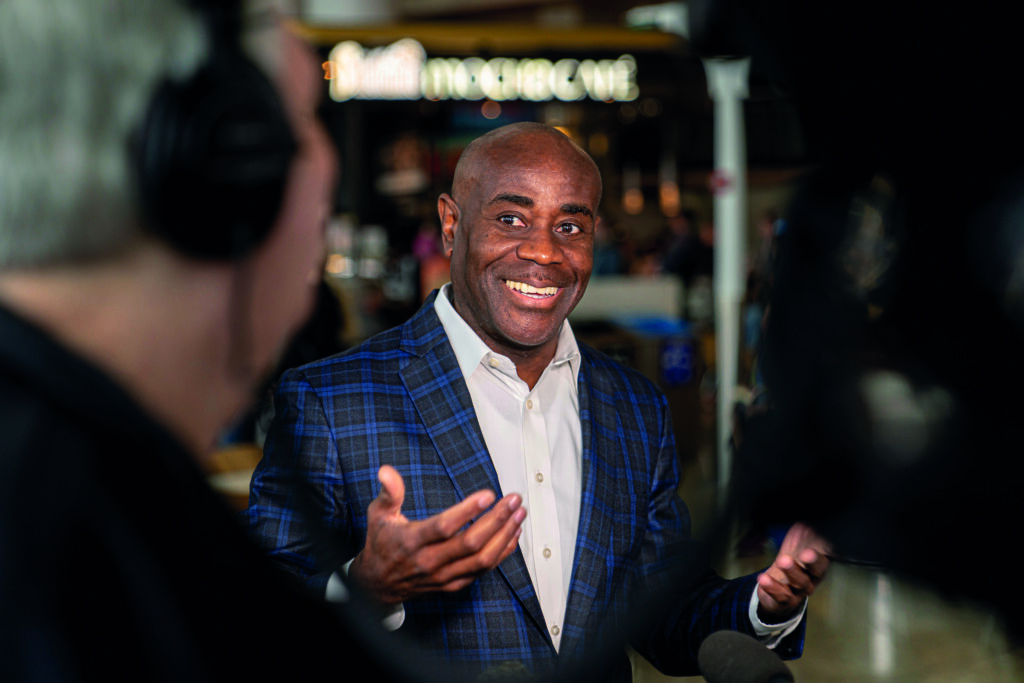

Courageous, empathetic and inclusive. Those are the three words Lance Lyttle, Managing Director of Aviation Division at Seattle-Tacoma International (SEA) Airport in the US chooses to describe himself. All admirable qualities for an airport leader, especially one who didn’t set out to pursue a career in aviation.
“I was born, raised and educated in Kingston Jamaica,” he tells Regional Gateway, adding that having left school he studied physics and computer science for his undergraduate degree before doing an MSc in Management Information Systems.
He started out working in the technology sector and aluminium mining industry before migrating to the US in 1999 to pursue the role of Chief Information Officer at Hartsfield Jackson International Airport. This is where, he says, “my airport career took off”.
He spent 10 years at Hartsfield Jackson, one of the busiest air transport hubs in the world, progressing through the ranks to become an Assistant Managing Director.
He then moved to Houston Airports, where he was initially appointed Chief Strategy and Performance Officer before being promoted to Chief Development Officer and ultimately Chief Operating Officer overseeing day-to-day operations at all three airports in the Houston Airport portfolio: William P. Hobby Airport, George Bush International and Ellington Airport. “Then eight years ago I was offered the position of Managing Director at Seattle-Tacoma and that’s where I’ve been ever since,” he says.
Serving the community
Located between Seattle and Tacoma, SEA might be one of the busier airports in the US, but it also very much a regional hub serving as a gateway to the state of Washington and as a key hub for domestic flights serving the US.
What’s more, for Lyttle, no matter what size or how many passengers an airport serves, air transport hubs across the US face similar challenges and the need to share resources and knowledge has never been more pressing. While his background in technology unwittingly paved the way for his flightpath into the airport community, Lyttle admits that airport technology has changed significantly over the last 15 years and he’s no longer the tech geek he once was.
“It gave me a great foundation,” he says. “Because when you’re involved with technology, you have responsibility for systems across all airport operations, from planning and design, to security, maintenance and finance. My background in technology has given me a broad understanding of airport operations in general. But now I can rely on a fantastic IT department to keep me abreast of what’s happening on that front.”
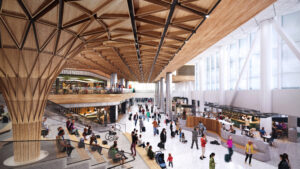


Regional hub; Seattle-Tacoma Airport serves as a gateway to the state of Washington.
Given SEA, which is owned and operated by the government agency Port of Seattle, is expecting to see out 2023 having accommodated around 51.2 million passengers (close to its peak in 2019 of 51.8 million passengers) and 423,000 aircraft movements, it’s no surprise that running the air transport hub is very much a team effort.
The airport currently employs around 1,200 people directly (although Lyttle admits it’s more like 20,000 indirectly) and has 32 carriers, serving 95 domestic and 30 international destinations.
While Lyttle is focused on growing connectivity to and from the airport, he reveals that one of the constraints the airport faces currently is its footprint. Covering just 2,500 acres, it is one of the most densely operated airports in the US.
This, he says, creates a challenge in terms of building capacity and limits the times that new flights can land as the airport is already “maxed out” during peak hours and stretched for services such as check-in facilities and ground handling support.
Building up, not out
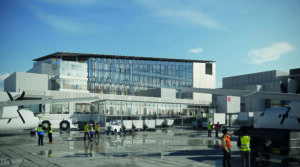


Seattle-Tacoma Airport is expanding Concourse C as part of a programme of improvements.
SEA has already embarked on infrastructural improvements for which it is investing US$4.6 billion over the next five years. It completed the modernisation of Concourse N in 2021 and construction is now underway to expand Concourse C.
The airport’s limited footprint has meant that this latest construction project is being developed up, rather than out.
Lyttle says: “We’re adding four floors to the facility we already have, with new dining and retail concessions, interfaith prayer and meditation rooms, mothers nursing suites, sensory rooms and a 20,000 sq ft lounge that Alaska Airlines will occupy.”
A focal point of the new facility will be an expansive staircase clad in locally sourced Douglas Fir, which Lyttle describes as an “iconic meeting point where people can gather, sit and soak up the views.”
There will also be a performing arts area and office spaces that will be available to lease. Overall, the terminal space will increase from 80,000 sq ft to around 220,000 sq ft, and with the FIFA World Cup football tournament being held in Seattle in 2026, the plan is to have most of the work completed before then.
While North America-based Turner Construction has been appointed as the general contractor for the build, Miller Hull Partnership and Woods Bagot are responsible for the design, with sustainability playing a key role in the new infrastructure. According to the architecture firms behind the design, the embodied carbon reduction strategies and biophilic design principles will define the expansion. The build will feature fossil-free systems for heating and hot water, as well as dishwashing facilities for vendors that will reduce the demand for disposable dishes and low-flow water fixtures. Rooftop photovoltaic panels and a solar array will provide up to 15% of the energy demand.
“Sustainability is ingrained in pretty much everything we do,” adds Lyttle. “Every construction project above a certain US$ amount has to go through a sustainability framework where we’ll look at its environmental and societal impacts.
“As a result of this, one of the things we’re introducing with the C Course Expansion is a storage facility for surplus food supplies so we can donate them to local food banks. We’re also introducing dedicated staff rooms which can be used during breaks, and bicycle racks for those who want to cycle to work. The build will also feature electrochromic glazing fixtures on the windows, so the window tints will adjust automatically depending on how much sunlight is coming in.”
Looking ahead, there are further plans to modernise the airport, says Lyttle, referencing the Port of Seattle’s Sustainable Airport Master Plan (SAMP), which is the blueprint for changes at the airport to meet future demand and is currently in the environmental review.
In addition to considering forecasted passenger and cargo demand, it takes stock of current facilities infrastructure and operations both now and in the future. Near-term project highlights from the SAMP include 19 additional gates and new cargo facilities.
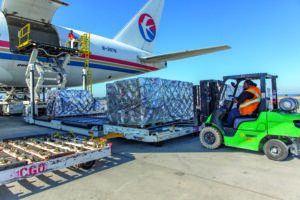


The Port of Seattle’s Sustainable Airport Master Plan will take account of air cargo demand.
Enhancing cargo operations at the airport is important, says Lyttle, but not because of how it benefits SEA directly, as it’s really a break-even business for the airport.
“It’s important though for the wider economic opportunities it creates for people within the region we serve. We currently have around 420,000 sq ft of cargo space and around 15 buildings. We’re renovating five of those so they can be used more efficiently by the tenants, but any further development will be subject to the SAMP.”
Size doesn’t matter
As for the hurdles his airport continues to face, Lyttle reiterates these are the same for many air transport hubs across the US, no matter what their size.
“Most airports continue to be affected by the skills shortage,” he says. “Since the pandemic, people are not coming back into the workforce as we expected. It’s not just for airport operation teams either – our tenants, concessionaires and ground handling partners are struggling to recruit new staff.”
Another issue he warns, is inflation. “The cost of a project that we costed up and budgeted two or three years ago is now potentially up to double the price.”
There’s also the rapid rebound in passenger traffic that is proving a juggle. “Previously, following disruptions to the aviation sector, business travellers have led the rebound, but this time it’s domestic and leisure travellers that are leading the demand and they behave differently,” says Lyttle.
“They require different amenities and typically spend more time during the security screening process as there are high volumes of families travelling with young children. The facilities that are needed to support these passengers aren’t necessarily in place, so it can be a struggle keeping pace with the growth that’s taking place currently.”
With all the uncertainty and hurdles to overcome, does Lyttle ever consider moving away from the sector? “Not at all,” he says. “I had no plans initially to pursue a career in aviation, it was a happy coincidence that the opportunity arose to work in an airport at a time when I was young, single and adventurous. I took a chance and I’ve never regretted it. Once you’ve got aviation in your blood, it’s hard to turn your back on it!”
He certainly wouldn’t tell his younger self to do anything differently. “Everything that happens in life happens for a reason,” he says. “It has all led to where I am now, with the family I have, the colleagues I work with and the job that I do. So I wouldn’t say a thing to my younger self because I wouldn’t want that person to change a thing.”
This article was featured in the December 2023 edition of Regional Gateway. If you would like to subscribe to receive Regional Gateway, you can do so here
